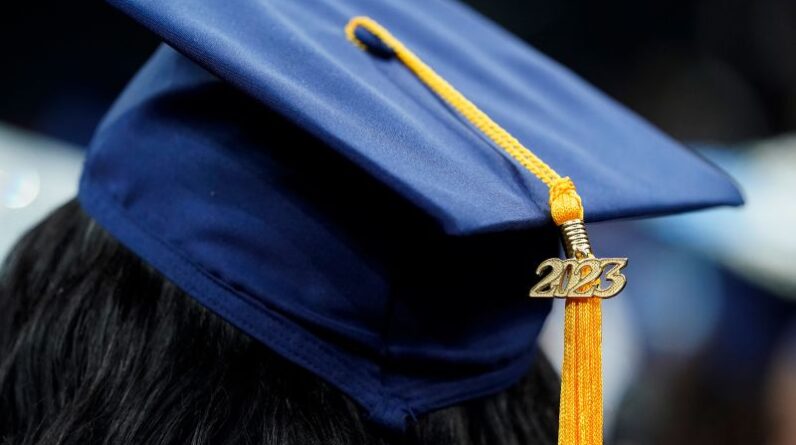
Washington
CNN
—
Both the Senate and the House have now passed a bill to block President Joe Biden’s student loan forgiveness program, which promises to write off up to $20,000 of debt for millions of borrowers but has been stalled by courts
The bill now goes to Biden’s desk for his signature, but the president has vowed to veto the legislation.
Some moderate Democrats joined Republicans in voting for the bill. The Senate passed the bill on Thursday and the House passed the bill last week.
Democratic Sens. Joe Manchin of West Virginia and Jon Tester of Montana voted for the bill, as did Arizona Sen. Kyrsten Sinema, an independent. The resolution failed to pass with a veto-proof majority.
Last week, Maine Rep. Jared Golden and Washington Rep. Marie Gluesenkamp Perez, both Democrats, also voted for the bill in the House.
Meanwhile, borrowers are still awaiting a decision from the Supreme Court, which will determine whether the student loan forgiveness program can go into effect. The justices are expected to rule in late June or early July.
The White House has argued that the proposal to write off some student debt will help protect borrowers from defaults when student loan payments resume later this year after a years-long pandemic-related hiatus.
But Republicans argue that the student loan forgiveness program is illegal and shifts the cost of debt to taxpayers who have opted out of college or have already paid off their student loans. Blocking the program could reduce the deficit by nearly $320 billion, according to the Congressional Budget Office.
Republican lawmakers introduced their joint resolution in late March, using the Congressional Review Act, which allows Congress to roll back executive branch regulations without clearing the 60-vote threshold in the Senate that is needed for the most of the legislation.
If the student loan forgiveness program is allowed to go forward, individual borrowers who earned less than $125,000 in 2020 or 2021 and married couples or heads of households who earned less than $250,000 a year could see up to to $10,000 of your federal student debt. .
If a qualified borrower also received a federal Pell Grant while enrolled in college, the individual is eligible for up to $20,000 in debt forgiveness.
While the debt relief would help borrowers with student loans now, the program would not change the cost of college in the future, and some critics argue that it could even lead to tuition increases.
In February, the Supreme Court heard two legal challenges to Biden’s student loan forgiveness program. One was filed by six Republican-led states, and the other was filed by two student loan borrowers who were ineligible for all of the program’s benefits. The individuals are supported by the Job Creators Network Foundation, a conservative organization.
The lawsuits argue that the Biden administration is abusing its power and using the Covid-19 pandemic as a pretext to fulfill the president’s campaign pledge to cancel student debt.
The White House has said it received 26 million applications before a lower Texas court that blocked the program nationwide in November, and that 16 million of those applications have been approved for relief. .
No debt has been canceled yet. But if the Supreme Court allows the program to go into effect, the government may move quickly to forgive those debts.
If the justices strike down Biden’s student loan forgiveness program, it could be possible for the administration to make some tweaks to the policy and try again, though that process could take months.
Biden has repeatedly extended the pause in federal student loan payments. The accounts have been frozen and most federal borrowers have not been required to make a payment for more than three years.
But the hiatus will end this year.
The Biden administration has tied the restart date to litigation over the separate student loan forgiveness program. Payments will resume 60 days after the Supreme Court issues its ruling or 60 days after June 30, whichever comes first. A bill to address the debt ceiling, currently moving through Congress, would also prohibit another extension.
The Biden administration has also made some lesser-known but potentially more lasting changes to the federal student loan system.
New rules that take effect in July could expand eligibility for the Public Service Loan Forgiveness program, which aims to help nonprofit and government workers. And a new income-based repayment plan proposal that aims to lower monthly payments for eligible borrowers and reduce the amount they repay over time. Parts of this new repayment plan are expected to go into effect later this year.
The Department of Education has also made it easier for borrowers who were misled by their for-profit college to apply for student loan forgiveness under a program known as borrower defense to repayment, as well as by to those who are permanently disabled.
Altogether, the Biden administration has approved more than $66 billion in loans targeting nearly 2.2 million borrowers.
[ad_2]
Source link





